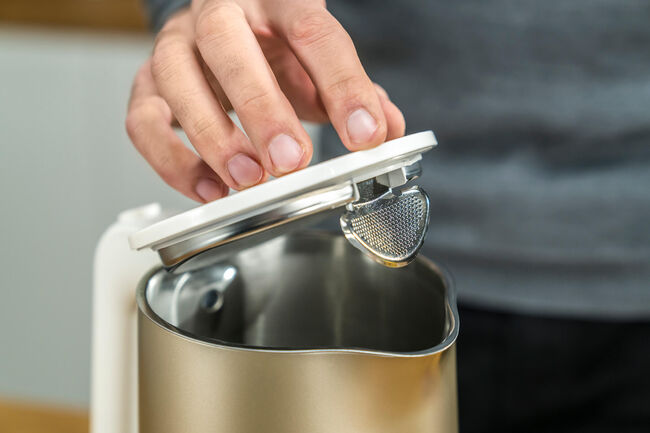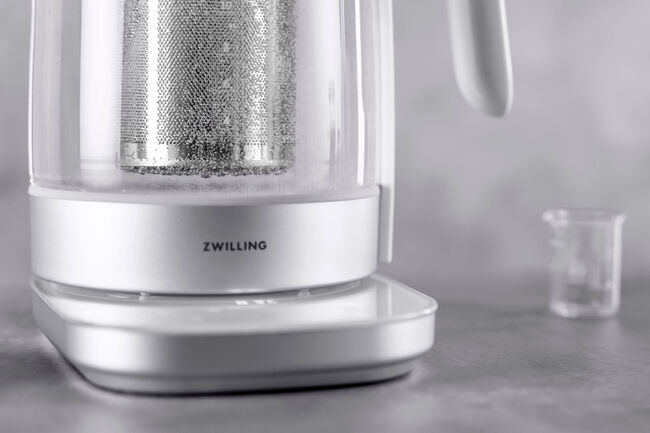
Say goodbye to limescale: A guide to limescale reduction and decalcification
Limescale - a common problem in households. Especially in areas with hard water. Not only does it shorten the life of household appliances such as kettles, but it also affects the taste and quality of the water. Fortunately, some solutions prevent limescale from standing a chance, for example, with the built-in limescale filter in your ZWILLING ENFINIGY kettle.

Kettle with limescale filter - lasts longer, tastes better
The stainless steel limescale filter in the kettle is an extremely practical addition that reduces limescale deposits and makes the water cleaner and tastier. The filter is usually made of a special substance that keeps the limescale particles out of the boiling water and effectively protects the kettle.

Descaling the kettle is not complicated. We recommend doing it regularly to get the best result. Here is a simple step-by-step guide on how to effectively descale your kettle:
- Preparation: Make sure that the kettle is switched off and has cooled down. Disconnect the kettle from the mains before descaling.
- Descale the kettle with vinegar or our ZWILLING descaler: Fill the kettle with water and bring to boil. Then, add a little vinegar or descaler to dissolve the limescale deposits.
- Soak: Leave the mixture in the kettle for about an hour. During this time, the limescale deposits will be dissolved.
- Let it cool down afterwards and pour it out of the kettle.
- Thorough rinsing: rinse the kettle thoroughly with clean water several times to remove any vinegar or citric acid residue.
- Drying: Dry the kettle thoroughly before putting it back into operation.

How often do I need to descale the kettle?
The frequency of descaling depends on the water hardness and frequency of use. In areas with very hard water, it is recommended to descale the kettle every 1 - 2 months, while in areas with softer water, descaling every 2 - 3 months may be sufficient.

Hard water, soft water - what does it mean?
Hard and soft water are two terms that refer to the mineral content of drinking water. The main difference lies in the concentration of calcium and magnesium ions.
- Hard water contains a high amount of these minerals, while soft water contains few or none of them. It is formed when rainwater flows through calciferous rock layers, absorbing calcium and magnesium. Although these minerals are not harmful to the human body, they can cause limescale deposits in household appliances and piping, shortening these devices' lives.
- Soft water, on the other hand, is usually produced by softening hard water using ion exchange or reverse osmosis. It is gentler on household appliances, and detergents work more effectively because no soap deposits are formed.

Reduce lime in the kettle - you have it in your hand
In summary, the kettle's built-in limescale filter can effectively reduce limescale deposits. However, regular descaling is necessary to ensure optimal kettle performance and prevent limescale buildup. By not giving limescale a chance and providing proper care of your kettle, you can extend the life of your appliance and enjoy clean, tasty water.










